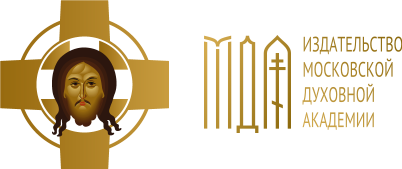Manifestations of archaic religiosity in the images of northern Russian fools in the Middle Ages (XIII–XIV centuries)
DOI:
https://doi.org/10.31802/CH.2022.9.3.002Keywords:
Russian religiosity, foolishness, holiness, archaic ideas, folk Orthodoxy, the period of St. Sergius of Radonezh, the Russian NorthAbstract
St. Sergius of Radonezh lived at a crucial time for formation of Russian Orthodox religiosity. This period is characterized not only by the growing popularity of the monastic system of life according to the model set by the founder of the Trinity-Sergius Lavra, but also by the appearance of bright personalities who carried the feat of foolishness for Christ (St. Procopius of Ustyug, St. Nikolay Kochanov and St. Theodore of Novgorod). Being an alternative way of ascetic order of religious life, foolishness expressed at the same time as the most understandable and evoked the sympathy and respect of the people of the gospel qualities (self-denial, asceticism, testimony of the truth of God, denunciation of social injustice), and rather archaic ideas of holiness, dating back to the pre-Christian period of the existence of the Slavs and associated with the idea of an excess of vital forces. Such a paradoxical combination of two ideological systems in the phenomenon of foolishness, one of which — Christianity — continued to be professed by the people, and the second — paganism — remained in the consciousness and everyday life of people, revealed a special «cultural dialect» of Russian Orthodoxy. Foolishness became a type of holiness, the closest to the archaic worldview. Being largely a legacy of religious beliefs and practices of previous eras, it was a wild branch, grafted by the labors of many ascetics of faith to the tree of Christian tradition and became a «community of the root and juice of the olive tree» (Rom. 11, 17) of the Gospel Truth.
Downloads
References
Живов В. М. Святость. Краткий словарь агиографических терминов. М.: Гнозис, 1994.
Голубинский Е. Е. История канонизации святых в Русской Церкви. М., 21903 (r1998).
Иванов С. А. Блаженные похабы. Культурная история юродства. М.: АСТ, 2019.
Из истории русской культуры. Т. I: Древняя Русь. М.: Языки русской культуры, 2000. (Язык. Семиотика. Культура).
Ковалевский И., свящ. Юродство о Христе и Христа ради юродивые Восточной и Русской Церкви. Исторический очерки жития сих подвижников благочестия. М.: Издание А. Д. Ступина, 31902. (М.: Светлячок, r1996).
Кологривов И., иером. Очерки по истории русской святости. Siracusa: Istina, 1991. 424 с.
Лихачёв Д. С., Панченко А. М., Понырко Н. В. Смех в Древней Руси. Ленинград: Наука, 1984. 296 с.
Петров А. В. Новгородские юродивые Николай Кочанов и Фёдор и их «распря» // Древняя Русь: во времени, в личностях, в идеях. Παλαιορωσια. Альманах. Вып. 2. Материалы научной конференции «Преподобный Сергий Радонежский: личность в контексте эпохи и история его почитания», Санкт-Петербург, 1–3 октября 2014. СПб.; Казань, 2014. С. 58–73.
Святые и святыни северорусских земель (по материалам VII научной региональной конференции) / сост. и науч. ред. Н. И. Решетникова. Каргополь, 2002. 316 с.
Топоров В. Н. Об одном архаичном индоевропейском элементе в древнерусской духовной культуре — *svęt // Языки культуры и проблемы переводимости. М.: Наука, 1987. С. 184–252.
Топоров В. Н. Святость и святые в русской духовной культуре: В 2 т. — Т. 1. Первый век христианства на Руси. М.: Гнозис — Школа «Языки русской культуры», 1995. 875 с.; Т. 2. Три века христианства на Руси (XII–XIV вв.). М.: Гнозис — Школа «Языки русской культуры», 1998.
Туминская О. А. Икона юродивого. Образ юродивого во Христе в русском изобразительном искусстве позднего Средневековья и Нового времени. М.: Дмитрий Буланин, 2016.
Федотов Г. П. Святые Древней Руси / предисл. Д. С. Лихачёва и А. В. Меня; коммент. С. С. Бычкова. М.: Московский рабочий, 1990.
Федотов Г. П. Собрание сочинений в 12 т. Т. XI. Русская религиозность. Часть 2. Средние века. XIII–XV вв. М.: Мартис — Sam & Sam, 2004.
Черкасова М. С. Северная Русь: история сурового края XIII–XVII вв. М.: Центрполиграф, 2017.
Юдин А. В. Русская народная духовная культура. М.: Высшая школа, 1999.
Published
How to Cite
Issue
Section
Categories
License

This work is licensed under a Creative Commons Attribution-ShareAlike 4.0 International License.







